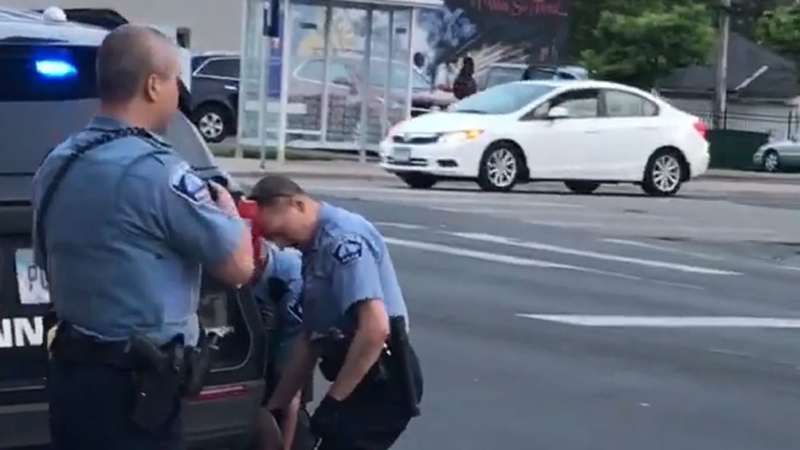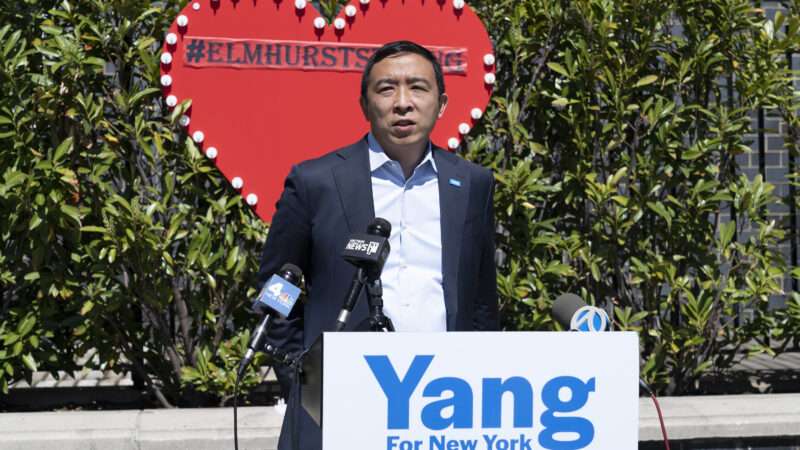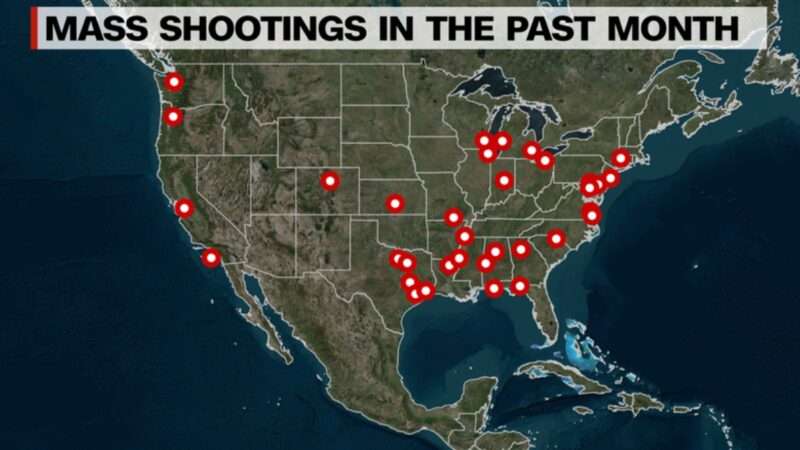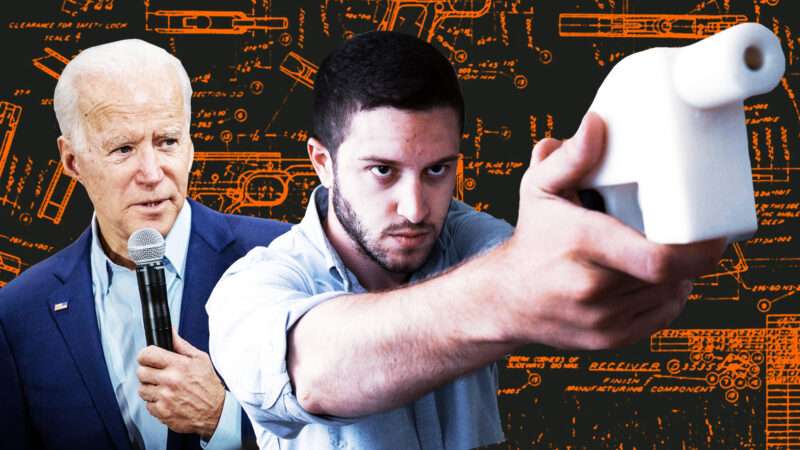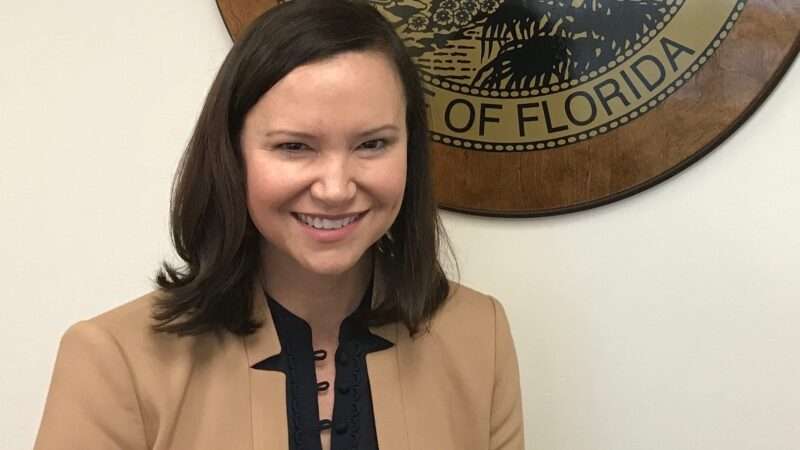
The Florida Supreme Court today nixed a proposed 2022 marijuana legalization initiative, saying the ballot summary “misleads voters into believing that the recreational use of marijuana in Florida will be free of any repercussions, criminal or otherwise.” That highly implausible reading is based on the assumption that Florida voters would believe they had the power to change federal law by approving a state ballot initiative.
The ballot summary for the Florida Marijuana Legalization and Medical Marijuana Treatment Center Sales Initiative says it “permits adults 21 years or older to possess, use, purchase, display, and transport up to 2.5 ounces of marijuana and marijuana accessories for personal use for any reason.” Not so, the court says in a 5–2 advisory opinion, since such conduct would still be prohibited by federal law. In reality, the initiative only eliminates civil and criminal penalties under state law.
“A constitutional amendment cannot unequivocally ‘permit’ or authorize conduct that is criminalized under federal law,” the majority says. “And a ballot summary suggesting otherwise is affirmatively misleading.”
That view jibes with the position taken by Florida’s Republican attorney general, Ashley Moody, who sought the advisory opinion. “This initiative suggests to voters that their vote will allow for conduct that will remain illegal with significant penalties,” she said.
Under the standard favored by Moody and the court, the ballot summaries for many legalization initiatives that voters in other states have approved in the last decade likewise were “affirmatively misleading.” Colorado’s 2012 initiative, the first successful measure of its kind, was described as “permitting a person twenty-one years of age or older to consume or possess limited amounts of marijuana.” The summary for Alaska’s 2014 initiative said it “would allow a person to possess, use, show, buy, transport, or grow set amounts of marijuana.”
California’s 2016 initiative purported to achieve “marijuana legalization,” which according to the Florida Supreme Court was blatantly inaccurate in light of continued federal prohibition. Michigan’s 2018 initiative aimed to “authorize and legalize possession, use and cultivation of marijuana products by individuals who are at least 21 years of age.” Voters who approved Arizona’s 2020 initiative were told it would “allow limited marijuana possession, use, and cultivation by adults 21 or older.”
I could go on, but you get the idea. Did voters in these and other states imagine that by approving these initiatives they were somehow amending the Controlled Substances Act, removing marijuana from the list of federally prohibited drugs? Probably not.
The ballot summary for the medical marijuana initiative that Florida voters approved in 2016 said it “allows medical use of marijuana for individuals with debilitating medical conditions as determined by a licensed Florida physician.” According to the logic of today’s opinion, that language was “affirmatively misleading” because it failed to note that the federal government does not allow marijuana use for any purpose.
Under the court’s precedents, Justice Alan Lawson says in his dissent, judicial review of ballot language “presumes that voters possess a rudimentary knowledge of their government’s structure and of the laws governing their conduct.” That means they “know what constitutes a federal crime” and recognize that “no state law—not even a state constitution—can override federal law.” Lawson calls the majority’s assumption of voter ignorance a “direct violation of the deferential, nonpaternalistic rules and presumptions that have historically governed our decisions in this area.”
State law requires that ballot summaries “explain the Florida constitutional change—with no requirement that the summary provide an explanation of secondary ramifications of the proposed amendment,” Lawson says. “Accordingly, we have ‘never required that a ballot summary inform voters as to the current state of federal law [or] the impact of a proposed state constitutional amendment on federal statutory law.’…It should be intuitively obvious to most that the majority’s condemnation of this summary for not explaining federal law is logically irreconcilable with…our precedent stating that the summary need only explain the Florida constitutional change being proposed.”
Lawson notes that “the proposed amendment itself expressly states that certain actions are ‘permitted,'” while “the ballot summary says that the amendment ‘[p]ermits’ those actions….In an extraordinarily rare occurrence for this Court, we are declaring a summary to be misleading even though it accurately describes the effect of the amendment using the same operative language as used in the amendment itself.” He concludes that “today’s decision underestimates Florida voters and adds hurdles to the citizen-initiative process that are not supported by the plain language of the governing law or our precedent.”
Make It Legal Florida, the organization backing the initiative, “had raised $8.2 million for the effort and had gathered more than 556,000 signatures out of the 891,589 needed for it to make the 2022 ballot,” The Miami Herald reports. Legalization supporters will now have to start over.
Ben Pollara, who ran the successful 2016 campaign to legalize medical marijuana in Florida, said today’s opinion reflects the influence of the three justices appointed by Republican Gov. Ron DeSantis, all of whom joined the majority. Recent polls put public support for legalization in Florida near or above 60 percent, the threshold for constitutional amendments. “Floridians would legalize marijuana tomorrow if given the opportunity to do so,” Pollara said, “but that’s clearly not what Tallahassee wants.”
from Latest – Reason.com https://ift.tt/3vdrrcF
via IFTTT


